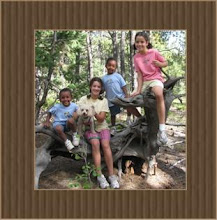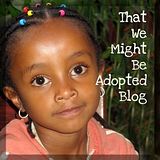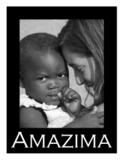Just thought it may be a good idea to clarify some terms I hear interchanged a lot on forums and blogs, etc.... When you are getting to know your child you are often told you are experiencing the attachment phase and when you finish that you are bonded. Well, there is some error in that. I will explain.
Attachment is defined as the mutual feeling of love and closeness. You and the child receive pleasure from your interaction and you love one another.
Bonded, the bond between mother and child, bonding is the child trusting the parent to provide and meet all his or her needs.
Attachment generally comes first and bonding follows.
A child who has had breaks in the relationship with his or her primary care giver will have a harder time attaching and bonding. This will be all children who are place for adoption.
In general if a child has had a steady, loving and peaceful relationship with his or her birthmother and their break is after the age of three, the child can transfer that attachment more easily. Who could ever know this? Mostly we have to assume we will need extra work and be pleasantly surprised if it goes easily. A child who has not been moved to different caregivers in the first three years will have an attachment to transfer, even if it is insecure. You will have to earn the transfer and work to make it a secure attachment. That is you get to help rewire your child's brain for a positive, secure attachment, easier if they have any at all to start with. Sometimes that is easy, sometimes it is hard, it all takes work. First the attachment, second the bonding. It is with this age child you have more concern with if they have been abused or not. More rewiring is needed for that. Much of the time you can never know. Assuming your child has experienced some form and level of trauma is usually the safe move. Hard work now, huge benefits when they are older.
An infant/toddler (child under 3) from an orphanage will have had many breaks. Mother gone for one reason or another, multiple nannies (this will not form secure attachments or bonds). The child's brain synapses are formed for insecure attachment or no attachment. You will have to help the child's brain rewire by lots of extra work. It is pretty normal for parents of infants to spend the time anyway, so it may seem more natural. But, learning and implementing attachment and bonding strategies at this age will have great pay off when the child is 8 or 9 and then as teens. Well worth it, even if it sounds excessive.
Friday, April 16, 2010
Subscribe to:
Post Comments (Atom)
Guest house gives back
Sponsor a Child
Disclaimer
The content on The Wayfarer:Ethiopian Adoption Resource Blog is for informational purposes only. We are adoptive parents, but we are not professionals. The opinions and suggestions expressed here are not intended to replace professional evaluation or therapy, or to supersede your agency. We assume no responsibility in the decisions that families make for their children and families. There are many links on this blog. We believe these other sites have valuable information, but we do not necessarily share all of the opinions or positions represented by each site, nor have we fully researched every aspect of each link. Please keep this in mind when visiting the links from this page.
Thank You.
Thank You.
A Links Disclaimer
I post a lot of links. I do so because I feel that the particular page has good information and much to offer. I do not necessarily support all that each site has to say or promote. I trust you to sift the links for information you feel is worthwhile to you. Each person's story and situation are unique and different things will be useful or not useful to each one in different ways. Please use your own discretion when accessing links and information.











































Dear Jill,
ReplyDeleteIs there a check list of cues, and signs for attachment and bonding between parents and adoptive children? My daughter is 3.5 y.o., has been home for 3.5 weeks, she seems to attached very well and very quickly with me so far, but sometime I wonder if I am reading the signs correctly? and if she is attached to me, and sees me only as a caregiver like her previous caregivers, or she starts knowing me as a mother?
How do I know? or it is still too early ?
thanks for your blog, very good & helpful articles for adoptive parents.
lehoanglan99 at yahoo